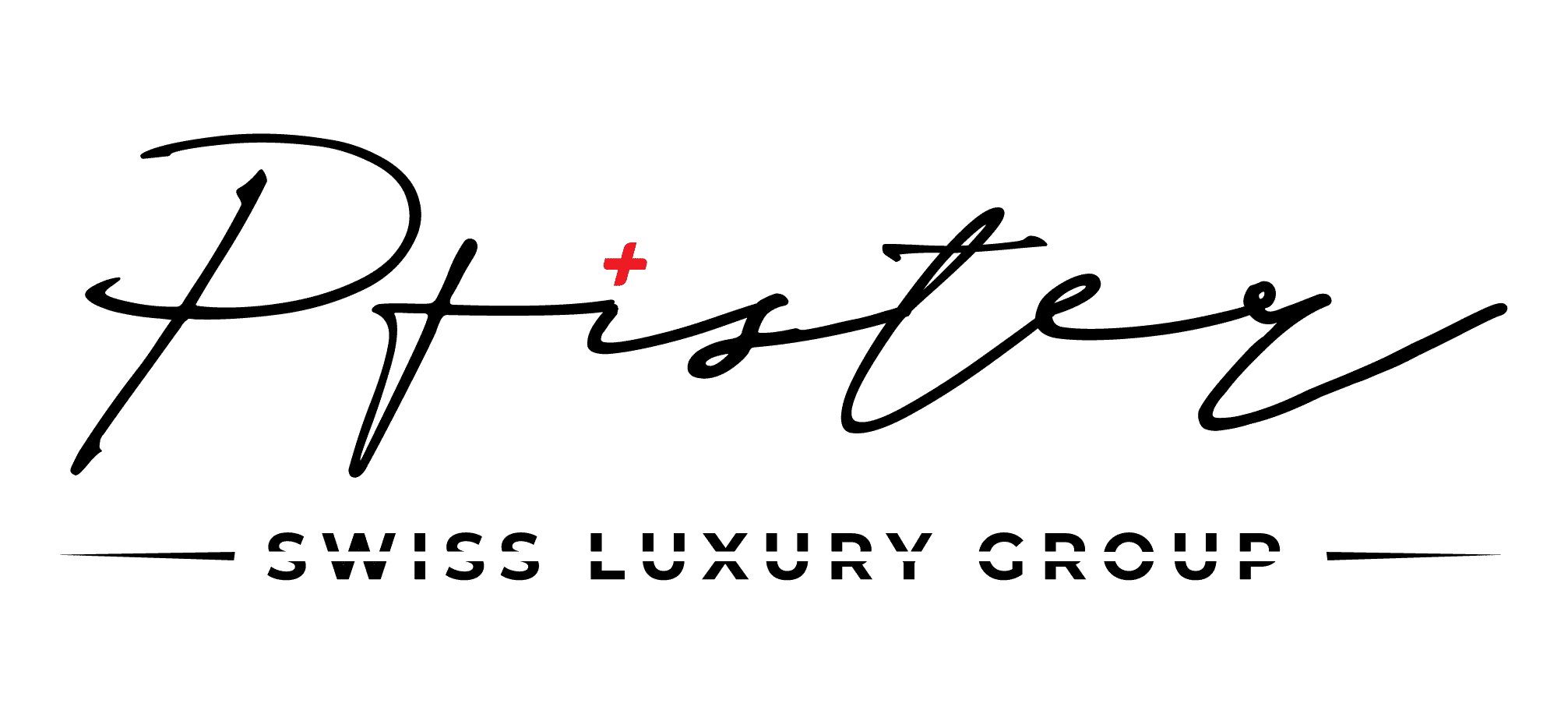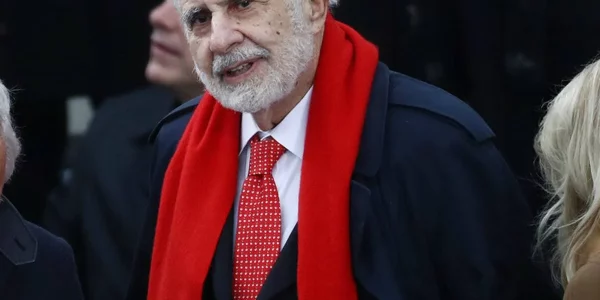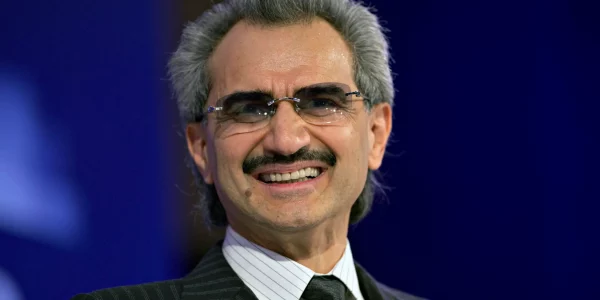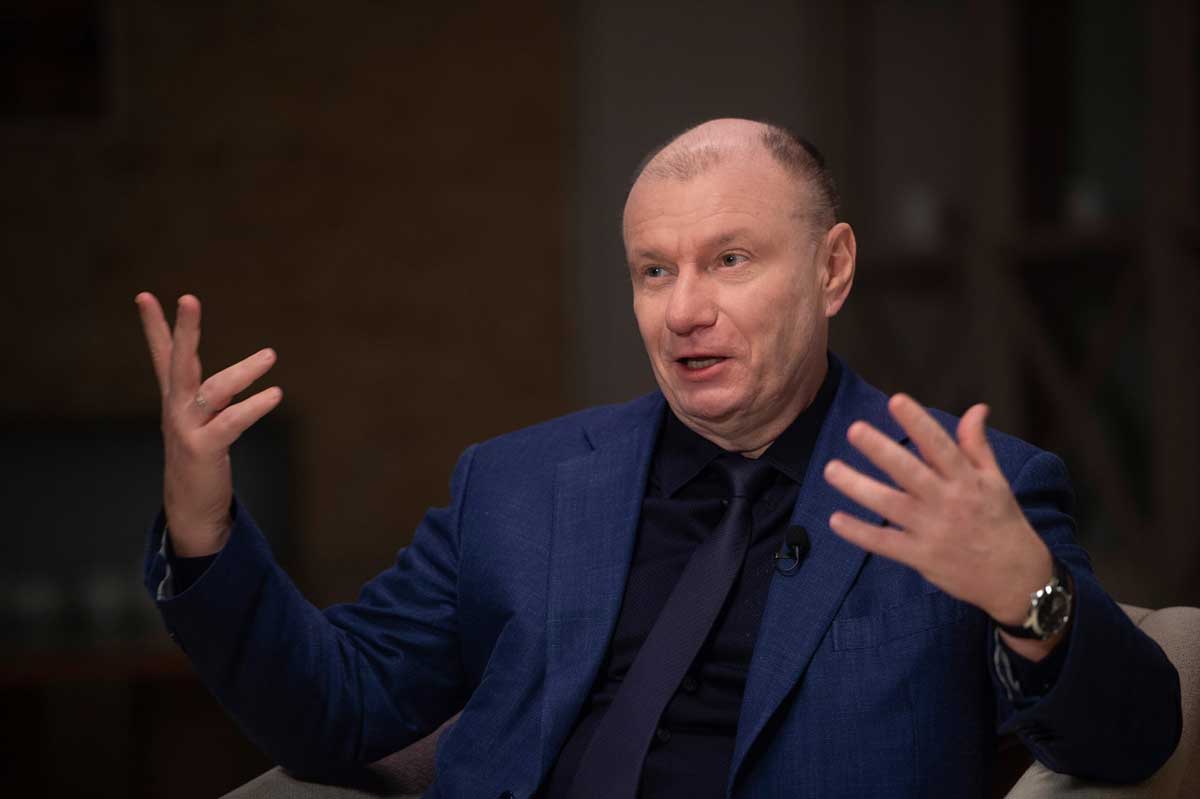
Vladimir Potanin The Arctic Metallurgical Emperor From Soviet Bureaucrat to $25 B Nickel Dominance
- The Transformation Matrix of the Ultimate System Insider: From Ministry Apparatchik to Global Metals Sovereign
- Introduction: The $25 Billion Arctic Industrial Sovereign
- From Soviet Ministry to Privatization Architect: Strategic System Insider
- The Nickel Empire Construction: Converting Soviet Industrial Might to Private Wealth
- The Arctic Metallurgical Empire: Beyond Simple Ownership to Industrial Dominance
- The Multi-Sector Wealth Diversification Strategy
- The Wealth Protection Architecture: Political Relationship Management as Ultimate Security
- The Investment Methodology: Arctic Industrial Dominance as Wealth Foundation
- The Future Architecture: Strategic Adaptation to Climate Transition
- Conclusion: The Ministry Official Who Built a Metallurgical Empire
The Transformation Matrix of the Ultimate System Insider: From Ministry Apparatchik to Global Metals Sovereign
Vladimir Potanin The Arctic Metallurgical Emperor From Soviet Bureaucrat to $25 B Nickel Dominance “Im Gegensatz zur chaotischen Privatisierungsstrategien anderer Oligarchen hat Potanin ein System der kontrollierten industriellen Unterwerfung geschaffen, in dem sowjetische Kommandowirtschaft in private Monopolmacht transformiert wurde – eine Metamorphose, die staatliche Kontrolle in persönlichen Reichtum verwandelt.” (Unlike the chaotic privatization strategies of other oligarchs, Potanin has created a system of controlled industrial subjugation in which Soviet command economy was transformed into private monopoly power – a metamorphosis that converts state control into personal wealth.)
Introduction: The $25 Billion Arctic Industrial Sovereign
Vladimir Potanin represents the apotheosis of what geopolitical strategists term “Strategische Industriekonsolidierungssouveränität” (strategic industrial consolidation sovereignty) – the systematic conversion of critical Soviet industrial infrastructure into private monopolistic dominance. Beginning not from disadvantage but from the privileged position of Soviet foreign trade ministry insider, Potanin architected a transformation from bureaucratic power to industrial wealth through mathematical precision in identifying, acquiring, and exploiting the strategic chokepoints of post-Soviet industrial production.
Unlike the chaotic opportunism of many Russian oligarchs, Potanin’s wealth creation demonstrates the clinical application of “Systemische Industrielle Dominanzarchitektur” (systemic industrial dominance architecture) – the deliberate targeting of irreplaceable Soviet industrial assets with global strategic significance. This methodology culminated in his control of Norilsk Nickel, the world’s largest producer of palladium and high-grade nickel, and one of the largest producers of platinum and copper – a company whose indispensable metals literally exist in every advanced technology on earth.
The most revealing pattern in Potanin’s wealth creation – systematically misunderstood by conventional financial analysts – is not his accumulation of personal luxuries (ski resorts, yachts, art) but rather his implementation of “Arktische Rohstoffsouveränität” (Arctic resource sovereignty) – the conversion of the remote Soviet Arctic industrial outpost of Norilsk into a personal metallurgical empire that produces minerals essential to everything from catalytic converters to military hardware to smartphones. This positioning has created a wealth foundation of extraordinary resilience, withstanding multiple financial crises, oligarch purges, and even Western sanctions.
From Soviet Ministry to Privatization Architect: Strategic System Insider
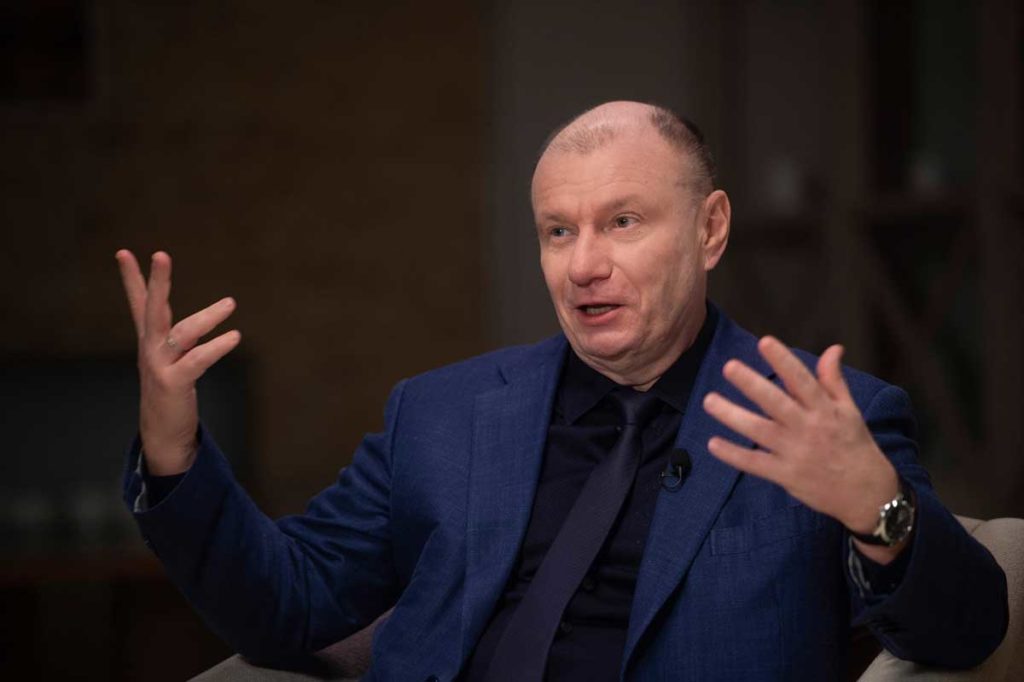
Phase I – The Soviet Elite Foundation (1961-1991): Building the Ultimate Insider Position
Unlike oligarchs who emerged from outsider positions, Potanin’s early trajectory demonstrates the advantages of what sociologists term “Systemische Elitenpositionierung” (systemic elite positioning):
- The Nomenklatura Origins
Potanin began with significant insider advantages:
- Father: Oleg Potanin, high-ranking Soviet foreign trade official
- Family status: Diplomatic elite with foreign posting privileges
- Education: Moscow State Institute of International Relations (MGIMO)
- Elite diplomatic training ground for Soviet foreign service
- Limited enrollment reserved for nomenklatura families
- Specialized focus: International economic relations
- Early career: Soviet Ministry of Foreign Economic Relations (1983-1990)
- Strategic position at interface between Soviet economy and external markets
- Specialized knowledge of export mechanisms and hard currency operations
- Access to foreign trade licensing and approval processes
- Development of international banking relationships
- The Strategic Knowledge Acquisition
This ministerial position provided Potanin with critical advantages:
- Comprehensive understanding of Soviet industrial export capabilities
- Detailed knowledge of foreign currency generation mechanisms
- Intimate familiarity with international settlement systems
- Recognition of strategic industrial chokepoints in Soviet economy
- International banking system connections unavailable to most Soviets
- Foreign language capabilities and international negotiation experience
- The Pre-Collapse Positioning
As the Soviet system began its terminal decline, Potanin implemented sophisticated pre-positioning:
- Departure from ministry to establish Interros foreign trade association (1990)
- Strategic utilization of ministry connections for licensing approvals
- Foreign trade intermediation between Soviet enterprises and Western partners
- Foreign currency transaction facilitation during system collapse
- Hard currency accumulation during ruble collapse period
- International banking relationship development outside collapsing Soviet system
This Soviet insider positioning provided Potanin with fundamental advantages over oligarchs emerging from outside the nomenklatura system, particularly in identifying which industrial assets held strategic value beyond their Soviet-era financial statements.
Phase II – The Banking Transition Strategy (1992-1995)
Potanin’s transition from ministry official to financial power demonstrates sophisticated implementation of what economists term “Transformationsperiodefinanzarbitrage” (transformation period financial arbitrage):
- The Banking Foundation Creation
As the post-Soviet economy descended into chaos, Potanin established key financial infrastructure:
- Co-founding of Oneximbank (1993)
- Initial capital: Approximately $10 million
- Strategic license: One of first private banks with foreign exchange license
- Critical advantage: Foreign currency operations during hyperinflation
- Key positioning: Servicing former Soviet industrial exporters
- Forex operations: Managing hard currency flows from commodity exports
- Development of industrial account relationships:
- Target sector: Metal and mining enterprises with export capability
- Strategic focus: Operations generating foreign exchange
- Key accounts: Major metallurgical combinats and oil exporters
- Fundamental advantage: Banking services for entities with hard currency revenues
- Relationship development: Financial services for industrial managers
- The Authorized Bank Mechanism Exploitation
Perhaps Potanin’s most masterful innovation involved what financial historians call “Autorisierte Banksystemnutzung” (authorized bank system utilization):
- Strategic positioning: Oneximbank designated as authorized government bank
- Critical function: Processing state budget funds and government financial operations
- Mathematical advantage: Float utilization during hyperinflationary period
- Value extraction methodology: Delayed transfers in high-inflation environment
- Asset purchase capability: Utilization of float for discounted asset acquisition
- Estimated value capture: Hundreds of millions during peak inflation periods
This authorized bank status created what economists term “Hyper-inflationäres Zeitarbitrage” (hyper-inflationary time arbitrage) – the ability to extract enormous value through timing manipulation of transfers during periods of extreme inflation.
- The Privatization Program Design Initiative
Most critically, Potanin’s ultimate insider move involved directly shaping the privatization process itself:
- Strategic role: Architect of infamous “loans-for-shares” privatization scheme
- Policy position: Advisory capacity to Yeltsin government
- Proposal structure: Private banks “lending” to government in exchange for shares in state enterprises
- Design advantage: Creating a process he would subsequently exploit
- Implementation influence: Direct input on auction mechanics and participant qualifications
- Outcome control: System design tailored to favor inside participants
This extraordinary position as both privatization architect and subsequent beneficiary represents perhaps the ultimate expression of what political economists term “Regulierungsarbitragedesign” (regulatory arbitrage design) – the creation of a regulatory framework specifically engineered to be exploited by its designer.
The Nickel Empire Construction: Converting Soviet Industrial Might to Private Wealth
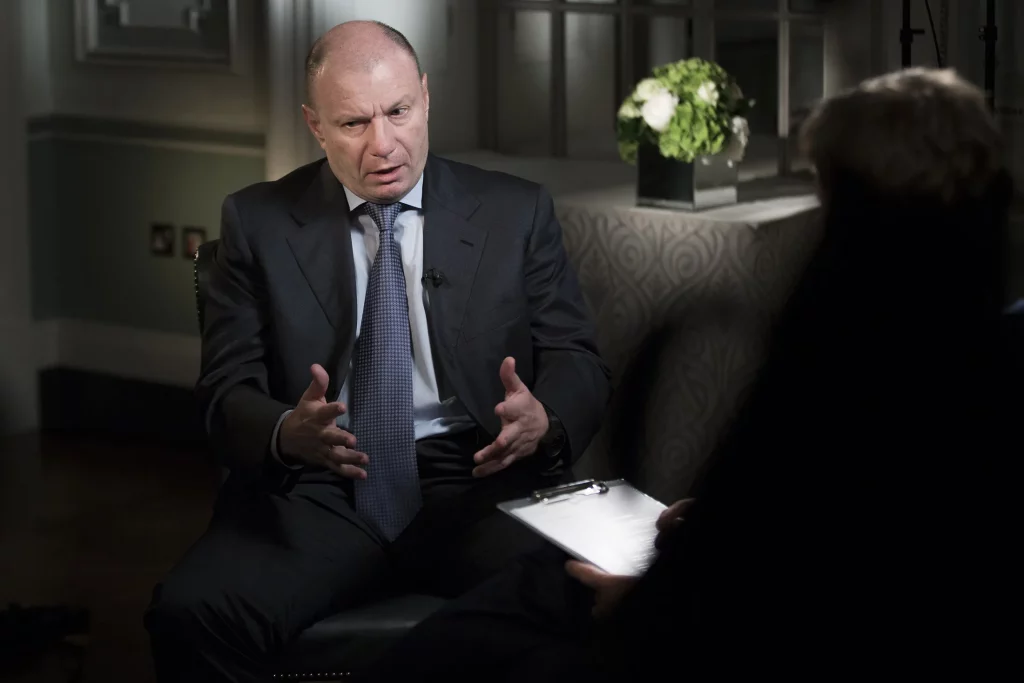
The Norilsk Nickel Acquisition (1995): The Ultimate Strategic Industrial Capture
The crown jewel of Potanin’s wealth creation emerged through the loans-for-shares acquisition of Norilsk Nickel – what resource economists identify as “Strategische Mineralressourcenkonsolidierung” (strategic mineral resource consolidation):
- The Target Selection Mathematics
Potanin’s selection of Norilsk Nickel demonstrated sophisticated industrial analysis:
- Global market position: World’s largest nickel and palladium producer
- Strategic mineral portfolio: Irreplaceable position in PGMs (platinum group metals)
- Soviet investment scale: Estimated $15-20 billion of Soviet-era infrastructure
- Arctic monopoly position: No competitive threat possibility
- Export revenue generation: Approximately $3+ billion annually in hard currency
- Defense industry criticality: Essential supplier for military-industrial applications
- Technological irreplaceability: No substitutes for key PGM applications
This target identification demonstrated Potanin’s implementation of “Strategische Ersetzbarkeitsanalyse” (strategic replaceability analysis) – focusing specifically on industrial assets with no viable substitutes or competition.
- The Acquisition Mechanism
The loans-for-shares acquisition demonstrated mathematical precision:
- Loan structure: $170 million to Russian government
- Collateral: 38% stake in Norilsk Nickel
- Government default: Pre-determined outcome given fiscal situation
- Auction process: Conducted by Potanin’s own Oneximbank
- Competitive exclusion: Disqualification of higher bids on technical grounds
- Final acquisition cost: $170 million plus $30-40 million in additional investment commitments
- Actual asset value: Conservatively $2-3 billion (10-15x acquisition price)
This transaction demonstrated the mathematics of insider privatization:
- Acquisition cost: Approximately $200 million
- Annual export revenue at time: $3+ billion
- Effective valuation: Less than 7% of annual revenue
- Replacement cost of infrastructure: $15-20 billion
- Privatization discount: 99% to replacement value
- The Control Consolidation Process
Following the initial acquisition, Potanin implemented systematic control expansion:
- Stake increase: From initial 38% to majority control
- Management installation: Placement of loyal executives in operational positions
- Financial restructuring: Establishment of sophisticated transfer pricing mechanisms
- Dividend policy: Calibrated balance between extraction and reinvestment
- Western integration: London listing and international banking relationships
- Operational modernization: Selective technological upgrades to Soviet-era equipment
By 2000, Norilsk Nickel had become:
- Potanin’s primary wealth engine
- Russia’s most valuable metals company
- A globally significant monopolist in key industrial metals
- The foundation for a multi-billion dollar fortune
- A strategic national asset under effective private control
This industrial conquest represents perhaps the most valuable single privatization in the post-Soviet space, creating what metallurgical economists term “Mineraliendominanzmonopol” (mineral dominance monopoly) – control of irreplaceable resources for which global industry has no alternatives.
The Arctic Metallurgical Empire: Beyond Simple Ownership to Industrial Dominance
Potanin’s control of Norilsk transcended conventional corporate ownership to establish what geopolitical analysts term “Arktische Industriesouveränität” (Arctic industrial sovereignty):
- The Norilsk Geographic Monopoly
The extreme Arctic positioning of Norilsk created unique dominance:
- Location: 200 miles north of Arctic Circle
- Average temperature: -10°C annually
- Winter conditions: -30°C for months with permanent darkness
- Infrastructure isolation: No roads connecting to Russian highway system
- Access limitations: Primary access via Northern Sea Route (ice-bound much of year)
- Company town structure: 180,000 population almost entirely dependent on combine
- Competitive insulation: Geographic impossibility of competitive operations
- The Strategic Metal Portfolio
Norilsk’s mineral production represented strategic irreplaceability:
- Palladium: 40% of global production
- Critical applications: Catalytic converters, electronics, hydrogen fuel cells
- Irreplaceable in automotive emission control systems
- Strategic significance: No viable substitutes at scale
- Nickel: 17% of global high-grade production
- Critical applications: Stainless steel, batteries, aerospace alloys
- Growing significance: Electric vehicle battery production
- Supply criticality: Highest grade deposits in operation
- Additional metals: Platinum, copper, cobalt, rhodium
- Military applications: Guidance systems, aerospace, communications
- Technological applications: Electronics, renewable energy, medical devices
- Industrial applications: Manufacturing, construction, automotive
This mineral portfolio created what economists term “Kritische Metallabhängigkeitsherrschaft” (critical metal dependency dominance) – control over materials for which modern industry has no alternatives.
- The Environmental Cost Externalization
Perhaps Norilsk’s most controversial dimension involves what environmental economists identify as “Extremumweltkosteninternalisierung” (extreme environmental cost internalization):
- Environmental situation: Norilsk ranked among world’s most polluted cities
- Annual sulfur dioxide emissions: Approximately 2 million tons
- Visible pollution radius: 100+ kilometers of dead forest surrounding operations
- Heavy metal contamination: Extensive soil pollution in surrounding territories
- Health impacts: Respiratory disease rates far exceeding Russian averages
- Life expectancy impact: 10+ years below Russian average in Norilsk
- Cleanup cost estimate: $2+ billion (now partially being addressed)
This environmental situation represents the dark side of Potanin’s industrial empire – the externalization of environmental costs that significantly enhanced profitability through avoided remediation expenses.
The Multi-Sector Wealth Diversification Strategy
Beyond Metals: Creating a Multi-Dimensional Fortune
While Norilsk remained his central wealth engine, Potanin implemented sophisticated diversification through what financial strategists term “Strategische Vermögenssektorendiversifizierung” (strategic wealth sector diversification):
- The Banking and Financial Services Platform
Building on his initial Oneximbank foundation, Potanin developed comprehensive financial infrastructure:
- Rosbank acquisition and development
- Growth to Russia’s 10th largest bank
- Strategic partnership with Société Générale (later acquired outright)
- Specialized focus on industrial client relationships
- Eventual sale to Société Générale for $2.3 billion
- Insurance sector expansion:
- Interros Insurance Company establishment
- Strategic focus on industrial risk management
- Corporate client base development
- Integration with broader financial services platform
- The Media and Communications Empire
Recognizing the strategic value of information control, Potanin built significant media holdings:
- Prof-Media holding company development
- Television assets: TV3, 2×2, MTV Russia
- Radio stations: Авторадио, Energy, Юмор FM
- Print media: Variety of publications
- Film production: Central Partnership
- Strategic media functions:
- Public opinion influence capability
- Crisis management information control
- Political relationship reinforcement
- Eventual partial divestment at significant profit
- The Luxury Recreation Portfolio
Perhaps most visibly, Potanin developed significant luxury assets:
- Rosa Khutor ski resort development
- Investment scale: $2.2 billion
- Strategic timing: Development for 2014 Sochi Olympics
- Government support: Partial funding through Olympic infrastructure program
- Current status: Russia’s premier alpine resort
- Other luxury assets:
- 88.8-meter yacht “Nirvana” (estimated $150 million)
- Art collection focusing on Russian artists
- Various international real estate holdings
This diversification strategy created what wealth architects term “Mehrschichtige Vermögenssicherung” (multi-layered wealth security) – protection through strategic positioning across multiple sectors of the Russian economy.
The Wealth Protection Architecture: Political Relationship Management as Ultimate Security
Beyond Legal Structures: Power Relationships as Wealth Foundation
Unlike Western billionaires who rely primarily on legal frameworks for wealth protection, Potanin developed what political scientists identify as “Machtelitebeziehungsarchitektur” (power elite relationship architecture):
- The Yeltsin Era Foundation (1991-2000)
During the chaotic Yeltsin period, Potanin established core political positioning:
- Official government role: First Deputy Prime Minister (1996-1997)
- Strategic portfolio: Economic policy and privatization oversight
- Functional advantage: Direct influence over industrial asset distribution
- Relationship development: Integration with Yeltsin’s inner circle
- Banking function: Financial support for Yeltsin’s 1996 re-election campaign
- Oligarch council participation:
- Membership in informal governing council of 7 key oligarchs
- Collective influence over government policy and appointments
- Strategic coalition building with other industrial players
- System-sustaining function during periods of instability
- The Putin Era Adaptation (2000-Present)
Unlike oligarchs who failed to adapt to the Putin power vertical, Potanin implemented sophisticated recalibration:
- Strategic withdrawal from overt political activity
- Focus shift to industrial stewardship narrative
- Patriotic business positioning with national interest alignment
- Consistent public support for government initiatives
- Acceptance of increased state influence in strategic sectors
- Careful avoidance of political opposition associations
- The Strategic National Champion Positioning
Perhaps most critically, Potanin repositioned Norilsk Nickel as “Strategischer Nationalmeister” (strategic national champion):
- Emphasis on irreplaceable role in Russian industrial base
- Strategic mineral production for domestic defense applications
- Export revenue generation supporting Russian economy
- Employment provision in strategic Arctic territory
- Infrastructure maintenance in geopolitically significant region
- Tax contribution to federal and regional budgets
This positioning created what political economists term “Systemische Unersetzbarkeit” (systemic irreplaceability) – becoming too strategically valuable to the Russian state for expropriation despite enormous wealth concentration.
The Sanction Resistance Architecture (2022-Present)
Following Western sanctions after Russia’s Ukraine invasion, Potanin demonstrated sophisticated adaptation through “Sanktionsresistenzstrategie” (sanctions resistance strategy):
- The Pre-Positioning Advantage
Years before sanctions, Potanin had implemented strategic insulation:
- Western asset minimization compared to other oligarchs
- Core wealth concentration in sanctions-resistant metals production
- Global industrial irreplaceability of key metal outputs
- Limited personal identification with Putin regime
- Strategic investment in domestic Russian assets
- Careful limitation of Western financial system dependence
- The Active Response Methodology
When sanctions were implemented, Potanin executed strategic countermeasures:
- Domestic acquisition opportunities exploitation:
- Rosbank repurchase from exiting Société Générale (at significant discount)
- Other distressed asset acquisitions from departing Western companies
- Transformation of sanctions into expansion opportunities
- Political capital development:
- Public calls for caution regarding Western asset seizures
- Warning about potential retaliatory nationalizations
- Positioning as voice of economic rationality
- Subtle distance from most aggressive Russian positions
- The Structural Sanction Insulation Factors
Most significantly, Norilsk Nickel’s irreplaceable industrial position created natural sanction resistance:
- Western reluctance to sanction palladium/nickel production given:
- Critical automotive industry requirements
- Aerospace and defense applications
- Absence of short-term alternative suppliers
- Impact on Western manufacturing capabilities
- Export mechanism adaptation:
- Market redirection toward Asian buyers
- Alternative payment system utilization
- Trading company intermediation in non-sanctioning jurisdictions
- Price advantage exploitation through discounted sales
This sanctions navigation demonstrates Potanin’s implementation of “Geopolitische Druckresistenzarchitektur” (geopolitical pressure resistance architecture) – the construction of wealth foundations fundamentally resistant to Western economic pressure due to strategic industrial positioning.
The Investment Methodology: Arctic Industrial Dominance as Wealth Foundation
The Five Strategic Metal Dominance Principles: Potanin’s Formula Distilled
Across multiple market cycles, Potanin has implemented five core principles constituting “Strategische Metallherrschaftsmethodik” (strategic metal dominance methodology):
1. The Irreplaceability Focus Formula
Unlike conventional resource investors, Potanin demonstrates obsessive focus on irreplaceability:
- Target material criteria: No viable substitutes at industrial scale
- Application criticality requirements: Essential for advanced manufacturing
- Supply concentration advantage: Limited global production alternatives
- Geographic barrier utilization: Arctic location preventing competitive entry
- Process complexity prioritization: Metallurgical operations with high barriers to replication
- Geopolitical insulation factors: Resources immune to short-term sanctioning
2. The Vertical Integration Dominance System
Potanin’s Norilsk implements extraordinary vertical integration:
- Mine-to-market control across entire value chain
- Physical infrastructure ownership from extraction to shipping
- Transportation system ownership (rail, port, shipping)
- Energy generation self-sufficiency in Arctic environment
- Residential infrastructure provision for workforce
- Complete ecosystem control in isolated geography
This integration creates what industrial economists term “Vollständige Wertschöpfungskettenbeherrschung” (complete value chain domination) – eliminating dependence on any external providers across the entire production sequence.
3. The Strategic Customer Dependency Creation
Beyond simple metal production, Potanin implements “Strategische Kundenabhängigkeitsentwicklung” (strategic customer dependency development):
- Industry-specific supply relationship cultivation
- Long-term contract structures with key consumers
- Technical specification customization creating switching costs
- Just-in-time delivery systems increasing disruption costs
- R&D collaboration with major industrial customers
- Technological co-development creating mutual dependency
This approach transforms simple commodity supply into strategic industrial partnerships with significantly higher switching costs.
4. The Environmental Cost Arbitrage System
Controversial but mathematically significant is Potanin’s implementation of “Umweltkostenexternalisierungsarbitrage” (environmental cost externalization arbitrage):
- Western environmental compliance cost avoidance
- Delayed implementation of emission control technologies
- Regulatory requirement undercompliance advantages
- Selective modernization focusing on production efficiency over emissions
- Strategic remediation timing aligned with political requirements
- Cost advantage through environmental standard differentials
This approach – now gradually changing under increasing pressure – created significant cost advantages against Western competitors bound by stricter environmental regulations.
5. The Commodity Cycle Navigation Methodology
Perhaps most sophisticated is Potanin’s implementation of “Rohstoffzyklusnavigationstrategie” (commodity cycle navigation strategy):
- Counter-cyclical acquisition during commodity downturns
- Capital expenditure calibration to market cycle positioning
- Cash reserve accumulation during price upswings
- Debt minimization providing downturn resilience
- Operational flexibility to adjust production volumes
- Strategic hedging program implementation
This approach has allowed Norilsk to maintain profitability across multiple commodity price cycles that destroyed less sophisticated operators.
The Future Architecture: Strategic Adaptation to Climate Transition
Anticipating Disruption: Green Metal Repositioning Strategy
Potanin’s forward wealth positioning involves what strategic planners term “Klimatransitionskapitalisierungsstrategie” (climate transition capitalization strategy):
- The Electric Vehicle Opportunity Capture
Potanin is actively repositioning Norilsk’s portfolio toward energy transition metals:
- Nickel production emphasis given battery applications
- Class 1 nickel focus (highest purity required for batteries)
- Processing capability enhancement for battery-grade materials
- Strategic marketing toward EV supply chain
- Long-term agreement development with battery manufacturers
- Copper production emphasis for EV electrical systems
- The ESG Recalibration Initiative
Recognizing changing investor requirements, Potanin has initiated environmental repositioning:
- Sulfur Project implementation: $3.6 billion emissions reduction program
- Target: 85% reduction in sulfur dioxide emissions by 2025
- Carbon footprint reduction initiatives across operations
- Renewable energy integration in production facilities
- Sustainability reporting enhancement to international standards
- Environmental remediation of historical contamination
- The Arctic Dominance Reinforcement
Perhaps most forward-looking is Potanin’s positioning for Arctic resource dominance:
- Northern Sea Route development participation
- Arctic infrastructure investment coordination with Russian state
- Climate change opportunity exploitation as Arctic becomes more accessible
- Expansion potential as ice reduction enables new development
- Strategic positioning for next generation of Arctic resource development
- National security dimension enhancement through Arctic presence
This forward positioning demonstrates Potanin’s implementation of “Strategische Zukunftsressourcensicherung” (strategic future resource securitization) – ensuring continued industrial relevance through the energy transition despite traditional industrial origins.
Conclusion: The Ministry Official Who Built a Metallurgical Empire
Vladimir Potanin’s transformation from Soviet foreign trade ministry official to $25 billion industrial emperor represents perhaps the most elegant implementation of what economic theorists term “Strategische Industriemonopolisierung” (strategic industrial monopolization) – the systematic identification and capture of irreplaceable industrial chokepoints during system transformation.
Unlike oligarchs who built wealth through chaotic opportunism or media-oriented industries, Potanin engineered his fortune through the deliberate acquisition of the most strategically irreplaceable segment of the Soviet industrial base: critical metals production essential to both Western and Eastern manufacturing. This methodology – beginning with insider positioning in the Soviet ministerial elite, advancing through privatization design advantage, and culminating in Arctic industrial dominance – demonstrates extraordinary precision in identifying and capturing irreplaceable industrial assets.
The wealth protection architecture subsequently developed – centered not on conventional legal structures but on strategic irreplaceability and political relationship management – has demonstrated remarkable resilience across multiple Russian political epochs and even against Western sanctions pressure. This protection system reveals Potanin‘s most distinctive capability: the transformation of industrial dominance into political insulation.
From Soviet ministry to metallurgical monopoly, from privatization architect to palladium emperor, from banking beginning to battery metal repositioning – Potanin’s trajectory represents the apotheosis of strategic industrial wealth creation. It demonstrates that extraordinary returns emerge not from innovation or market efficiency but from monopolistic control of irreplaceable industrial inputs – the mathematical certainty of profiting from materials for which global industry has no alternatives.
As a mining industry executive reportedly observed about his methodology: “Die anderen Oligarchen haben Macht in Reichtum verwandelt. Potanin hat Metalle, für die es keine Alternativen gibt, in dauerhafte Macht verwandelt.” (The other oligarchs transformed power into wealth. Potanin transformed metals for which there are no alternatives into permanent power.)
In a global financial system increasingly focused on technological innovation and digital disruption, Vladimir Potanin stands as the ultimate counter-narrative – a wealth architect who built billions through control of the physical materials without which no technology can exist, creating perhaps the ultimate form of industrial leverage: essential inputs for which there are simply no substitutes.
